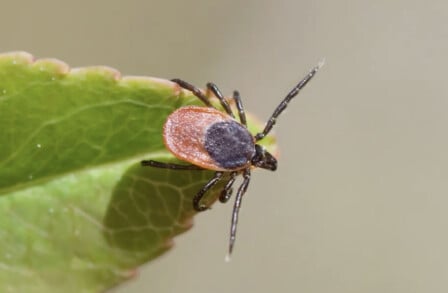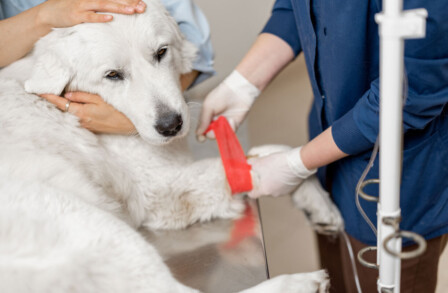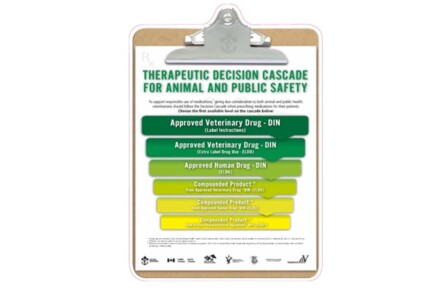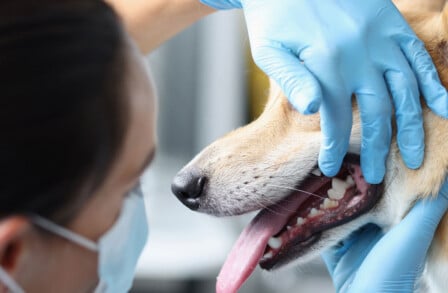Increase your knowledge with this eclectic collection of science-focused snippets, articles, video summaries and papers aimed at keeping you in the picture!

Scientific Snapshots
Watch this video, as veterinary parasitologist Emily Jenkins, PhD, DVM, BSc (Hons), reviews the most recent Canadian tick and flea prevalence data in terms of seasonality and location, with a focus on Western Canada. She talks about some of the parasites to look out for as well as the high-risk factors to take into consideration when managing parasites. She also discusses the benefits of a risk-based approach and the recommended preventative treatment.
Sponsored by




It is not uncommon, after a case of severe pancreatitis, for dogs to develop bile duct obstruction secondary to regional inflammation and scarring. In a previous study, pancreatitis was found to be the cause of 42% of cases of extrahepatic bile duct obstruction (EHBDO).
Historically, the management of pancreatitis associated bile duct obstruction (PABDO) has been either medical or surgical. In one study, surgery of the biliary tract was reported to have a 50% case fatality rate. As part of...
Sponsored by


Watch this video, as Serge Chalhoub, BSc, DVM, Dipl. ACVIM (SAIM), discusses the highlights presented in this recent publication, including reasons why cats don’t eat, their unique nutritional and energy requirements, and general considerations to take into account when examining an inappetant cat. He also talks about the nutritional support options available to help resolve the situation.
Sponsored by


A study evaluates probable ketoconazole-induced hepatopathy in dogs.
Ketoconazole is utilized commonly in dogs at a dose of 10 mg/kg/day to manage cutaneous Malassezia infections. Ketoconazole has been withdrawn from the human pharmaceutical market in Europe and Australia, and has been designated for “restrictive use” only in North America since 2013 due to the potential for this drug to cause severe hepatotoxicity. As well as its anti-yeast activity, ketoconazole is also known to be...
Sponsored by


In this Scientific Snapshot, Dr. Geoffrey Truchetti explains the veterinary therapeutic decision cascade to support the responsible use of medications when prescribing drugs to patients. He also examines the appropriate use of compounded products as well as the use of the decision cascade in small animal anesthesia and analgesia.
Sponsored by


A study evaluates the occurrence of lesions of endodontic origin in dogs suffering from uncomplicated dental fractures.
Fractured teeth are a common occurrence in our canine patients. Studies have revealed that about 25% of dogs will suffer a dental fracture during their lifetime. Common causes of tooth fracture include chewing inappropriate items, fights with other dogs, falls from a height, and blunt trauma.
The maxillary fourth premolar is a tooth that is especially susceptible to injury;...
Sponsored by


In this Scientific Snapshot, Dr. Jason Stull and Dr. Michelle Evason discuss a recent cross-sectional study they conducted on canine leptospirosis in Canada. During this video, they explain why they chose to investigate this particular research area and share the key findings and data they collected throughout this study. They also discuss how veterinary practitioners can use these findings to help them better prepare to address this daunting disease especially in the fall season, as this...
Sponsored by


Dr. Tara Edwards, a veterinary pain practitioner through the International Veterinary Academy of Pain Management, reviews the American Animal Hospital Association’s most recent Pain Management Guidelines for Dogs and Cats. She summarizes updates from the 2015 guidelines and discusses behavioural signs and changes that can help with pain recognition. She provides examples of validated Clinical Metrology Instruments used for screening, diagnosing and monitoring pain over time. She reviews flow...
Sponsored by


Dr. Charlie Pye, a board-certified veterinary dermatologist currently practicing at the Atlantic Veterinary College in Prince Edward Island, shares best practices in treatment and management of otitis externa. She provides an overview of primary, secondary, predisposing and perpetuating factors involved in otitis development. She reviews appropriate treatment options based on cytology findings. She also provides answers to common questions, such as when to perform a deep ear flush or a...
Sponsored by





 13:04 min
13:04 min








